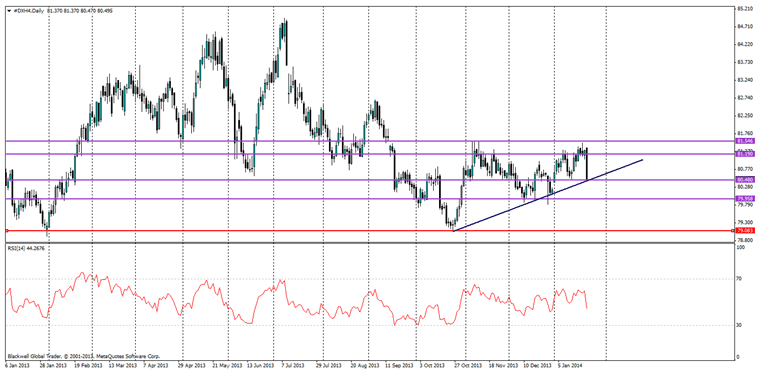Why I Am Watching The USDX
New York (Jan 26) The US dollar is the cornerstone currency on this planet and as such, 80% of global trading activity done in the currency market involves the USD. One of the most interesting and most commonly traded CFDs/indices is the US dollar index (USDX); a basket of all the major currencies that are traded against the USD weighted by their relative influence.
Overnight there was a significant drop in the USDX, as it fell heavily on the most recent unemployment data that was released. Initial jobless claims were slightly below what was expected, at 328k, while continuing jobless claims were at 3056k (forecasted drop to 2928k) certainly above what was expected. This weak jobless data had a negative effect on the currency markets as well as equities, while also providing a boost for gold as it rose on US market fears.
Such a drop in the USDX is rare for anything apart from unemployment data. But it was significant as markets’ fears were how the federal reserve would interpret the most recent data. Market expectations of the data seem to be that the FED might interpret such a slow dip in the jobless claims as a reason to slow tapering, until market conditions improve slightly more.
This data was also hit hard by overseas markets showing improvement, as the Euro-zone had positive manufacturing data as well as an improvement in consumer confidence, showcasing a strong return for the once struggling economy.
Overall though, these fears seem to be an overreaction as markets still view the US economy as recovering, as does the FED seeing as it has started actions for tapering. The US market will continue to recover further as GDP forecasts have been extremely positive for growth across the entire US economy. However, this is a slight risk for employment, but the general market consensus is for improvement.
Looking at the USDX in the charts helps to see the effects and give some reason for the overreaction of the market. We can clearly see that traders have pushed the USDX down to the bullish trendline, however, this trend line has held firm as markets still view a bullish USD in the long run.
The resistance levels for the USDX can be found at 81.190, and 81.546. All of which have been tested regularly, and so far acted as major levels of resistance. Support levels can be found at 80.480 and 79.958, however, these support levels only come into play if the trend line breaks as for the moment, support is dynamic and likely to be found on the trend line itself.
Overall, the recent downward fall in the USDX presents an opportunity for traders interested in taking advantage of a market overreaction. The question is now where to for the USDX, but in reality all the evidence certainly points north as the US economy recovers and the USD continues its global dominance as the currency of choice for doing business.













